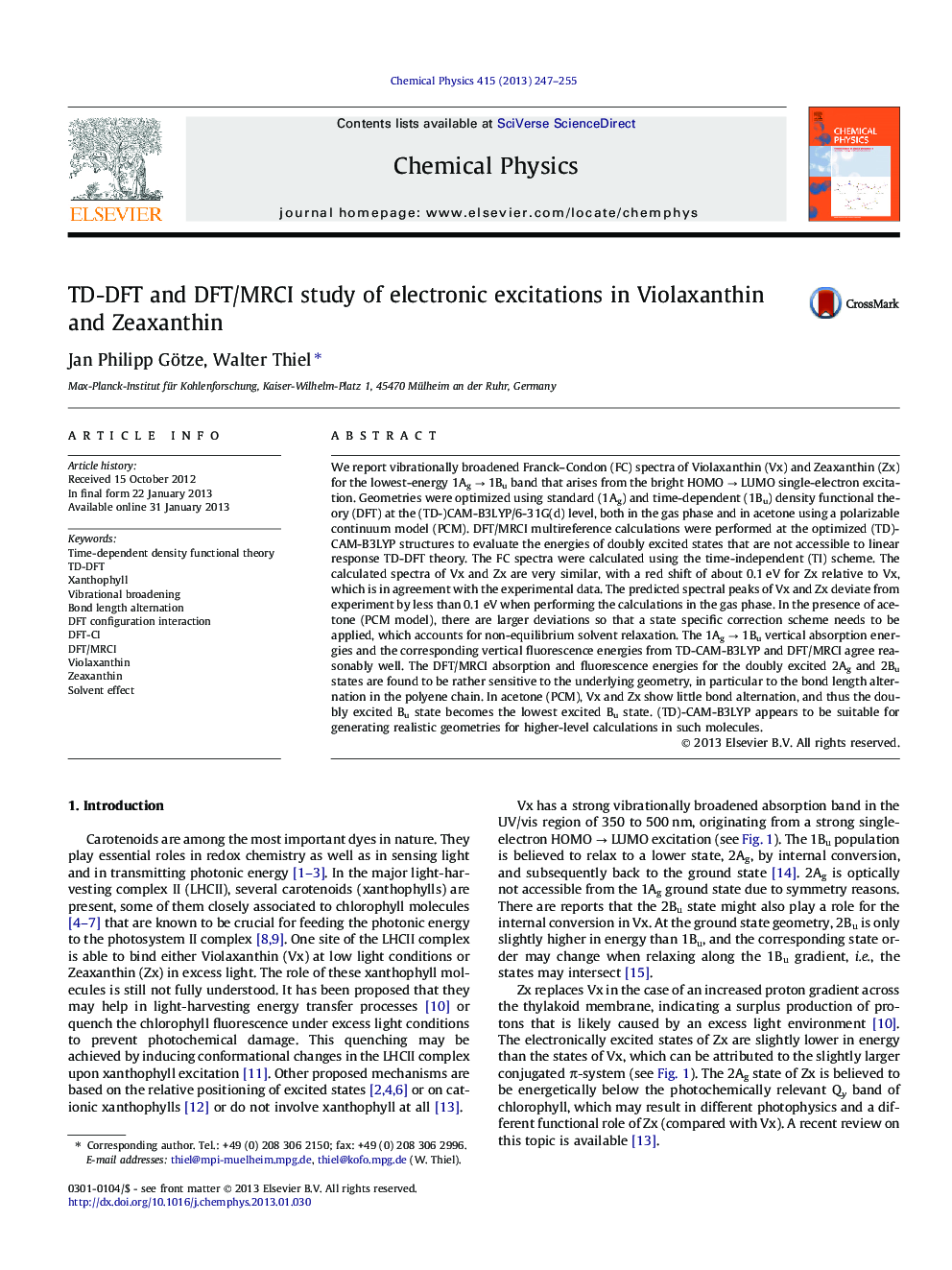| Article ID | Journal | Published Year | Pages | File Type |
|---|---|---|---|---|
| 5374097 | Chemical Physics | 2013 | 9 Pages |
We report vibrationally broadened Franck-Condon (FC) spectra of Violaxanthin (Vx) and Zeaxanthin (Zx) for the lowest-energy 1Ag â 1Bu band that arises from the bright HOMO â LUMO single-electron excitation. Geometries were optimized using standard (1Ag) and time-dependent (1Bu) density functional theory (DFT) at the (TD-)CAM-B3LYP/6-31G(d) level, both in the gas phase and in acetone using a polarizable continuum model (PCM). DFT/MRCI multireference calculations were performed at the optimized (TD)-CAM-B3LYP structures to evaluate the energies of doubly excited states that are not accessible to linear response TD-DFT theory. The FC spectra were calculated using the time-independent (TI) scheme. The calculated spectra of Vx and Zx are very similar, with a red shift of about 0.1 eV for Zx relative to Vx, which is in agreement with the experimental data. The predicted spectral peaks of Vx and Zx deviate from experiment by less than 0.1 eV when performing the calculations in the gas phase. In the presence of acetone (PCM model), there are larger deviations so that a state specific correction scheme needs to be applied, which accounts for non-equilibrium solvent relaxation. The 1Ag â 1Bu vertical absorption energies and the corresponding vertical fluorescence energies from TD-CAM-B3LYP and DFT/MRCI agree reasonably well. The DFT/MRCI absorption and fluorescence energies for the doubly excited 2Ag and 2Bu states are found to be rather sensitive to the underlying geometry, in particular to the bond length alternation in the polyene chain. In acetone (PCM), Vx and Zx show little bond alternation, and thus the doubly excited Bu state becomes the lowest excited Bu state. (TD)-CAM-B3LYP appears to be suitable for generating realistic geometries for higher-level calculations in such molecules.
Graphical abstractDownload full-size image.Highlights⺠Long-range DFT for Violaxanthin and Zeaxanthin, TD-DFT and Franck-Condon spectra. ⺠DFT based configuration interaction reveals two-electron excitation character. ⺠Solvent dependence of geometries is low for ground state, strong for excited state. ⺠CAM-B3LYP produces spectra in excellent agreement with experiment. ⺠Order of electronic states at 1Bu minimum is sensitive to geometry and environment.
